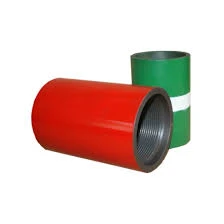- Afrikaans
- Albanian
- Amharic
- Arabic
- Armenian
- Azerbaijani
- Basque
- Belarusian
- Bengali
- Bosnian
- Bulgarian
- Catalan
- Cebuano
- Corsican
- Croatian
- Czech
- Danish
- Dutch
- English
- Esperanto
- Estonian
- Finnish
- French
- Frisian
- Galician
- Georgian
- German
- Greek
- Gujarati
- Haitian Creole
- hausa
- hawaiian
- Hebrew
- Hindi
- Miao
- Hungarian
- Icelandic
- igbo
- Indonesian
- irish
- Italian
- Japanese
- Javanese
- Kannada
- kazakh
- Khmer
- Rwandese
- Korean
- Kurdish
- Kyrgyz
- Lao
- Latin
- Latvian
- Lithuanian
- Luxembourgish
- Macedonian
- Malgashi
- Malay
- Malayalam
- Maltese
- Maori
- Marathi
- Mongolian
- Myanmar
- Nepali
- Norwegian
- Norwegian
- Occitan
- Pashto
- Persian
- Polish
- Portuguese
- Punjabi
- Romanian
- Russian
- Samoan
- Scottish Gaelic
- Serbian
- Sesotho
- Shona
- Sindhi
- Sinhala
- Slovak
- Slovenian
- Somali
- Spanish
- Sundanese
- Swahili
- Swedish
- Tagalog
- Tajik
- Tamil
- Tatar
- Telugu
- Thai
- Turkish
- Turkmen
- Ukrainian
- Urdu
- Uighur
- Uzbek
- Vietnamese
- Welsh
- Bantu
- Yiddish
- Yoruba
- Zulu
Aluminum Pipe Connectors and Fittings for Efficient Plumbing Solutions
Understanding Aluminum Pipe Couplings and Fittings
In various industries, the use of aluminum pipe couplings and fittings has gained popularity due to their lightweight properties, durability, and corrosion resistance. Aluminum, as a material, offers a unique combination of strength and weight, making it ideal for a wide range of applications. This article delves into the characteristics, advantages, types, and applications of aluminum pipe couplings and fittings.
Characteristics of Aluminum Pipe Couplings and Fittings
Aluminum pipe couplings and fittings are designed to connect straight sections of piping, enabling the transfer of liquids and gases in a secure and efficient manner. The primary characteristics that define these products include
1. Lightweight Aluminum is significantly lighter than steel and other metals, which reduces handling and transportation costs and makes installation easier.
2. Corrosion Resistance Unlike iron or untreated steel, aluminum naturally forms a protective oxide layer when exposed to air, which helps resist corrosion. This property makes aluminum fittings ideal for applications in harsh environments, including marine and chemical settings.
3. Durability Aluminum has high tensile strength, ensuring that pipe couplings and fittings can withstand high-pressure conditions without deforming or breaking.
4. Heat Conductivity Aluminum contributes to efficient heat transfer, which is beneficial for systems that require temperature control.
Advantages of Aluminum Fittings
The adoption of aluminum pipe couplings and fittings comes with several advantages that make them a preferred choice in many industries
- Cost-Effective Although the initial cost may be higher than plastic fittings, the longevity and lower maintenance needs of aluminum result in overall savings in the long term.
- Easy to Work With Aluminum can be easily machined and fabricated, allowing for custom fittings that meet specific project requirements, which is particularly important in specialized applications.
- Sustainability Aluminum is a recyclable material, making it an environmentally friendly choice. Many industries are moving towards sustainable practices, and choosing aluminum fittings contributes to this goal.
Types of Aluminum Pipe Couplings and Fittings
Aluminum couplings and fittings come in various configurations to accommodate different piping systems
aluminum pipe couplings and fittings

1. Couplings Used to connect two pipe ends together. They can either be plain or threaded, depending on the piping requirements.
2. Elbows These fittings allow for directional changes in the piping system, available in different angles (e.g., 45-degree, 90-degree) to facilitate the desired flow path.
3. Tees Used to create a branch in the piping system, which is useful for dividing flows or integrating additional lines.
4. Adapters These fittings connect pipes of different sizes or types, ensuring a secure transition between systems.
5. Flanges Used for joining two sections of pipe without needing a threaded connection. Flanges can support the installation of additional components like valves and gauges.
Applications of Aluminum Pipe Fittings
Aluminum pipe couplings and fittings are utilized across various sectors due to their versatile properties
- HVAC Systems In heating, ventilation, and air conditioning systems, aluminum fittings are used for ductwork, enabling efficient airflow and temperature regulation.
- Automotive Lightweight aluminum fittings can be found in vehicle fuel lines and cooling systems, contributing to overall vehicle efficiency.
- Water and Wastewater Management Their corrosion resistance makes aluminum fittings ideal for piping systems in water treatment facilities and municipal services.
- Aerospace and Marine Lightweight yet strong, aluminum pipe fittings are essential in aircraft and ship construction, where weight reduction is a critical factor.
- Industrial Applications Aluminum fittings are widely used in manufacturing and processing plants for conveying fluids and gases under various conditions.
Conclusion
Aluminum pipe couplings and fittings are indispensable components in modern piping systems, offering a blend of durability, lightweight properties, and corrosion resistance. Their versatility makes them suitable for numerous applications across different industries. As industries increasingly lean towards sustainable materials, aluminum's recyclability further enhances its appeal. Consequently, investing in aluminum pipe couplings and fittings is a smart choice for any project aiming for efficiency and longevity.
-
Well Casing Extension Couplings – Applications and InstallationNewsJun.06,2025
-
Types of Crossover Subs in Drilling & CompletionNewsJun.06,2025
-
Key Features of High-Quality Tubing Pup JointsNewsJun.06,2025
-
Installation and Maintenance Tips for Steel Couplings for PipeNewsJun.06,2025
-
How to Select the Right Pup Joint for Oil & Gas OperationsNewsJun.06,2025
-
Applications of Stainless Steel Pipe CouplingsNewsJun.06,2025







